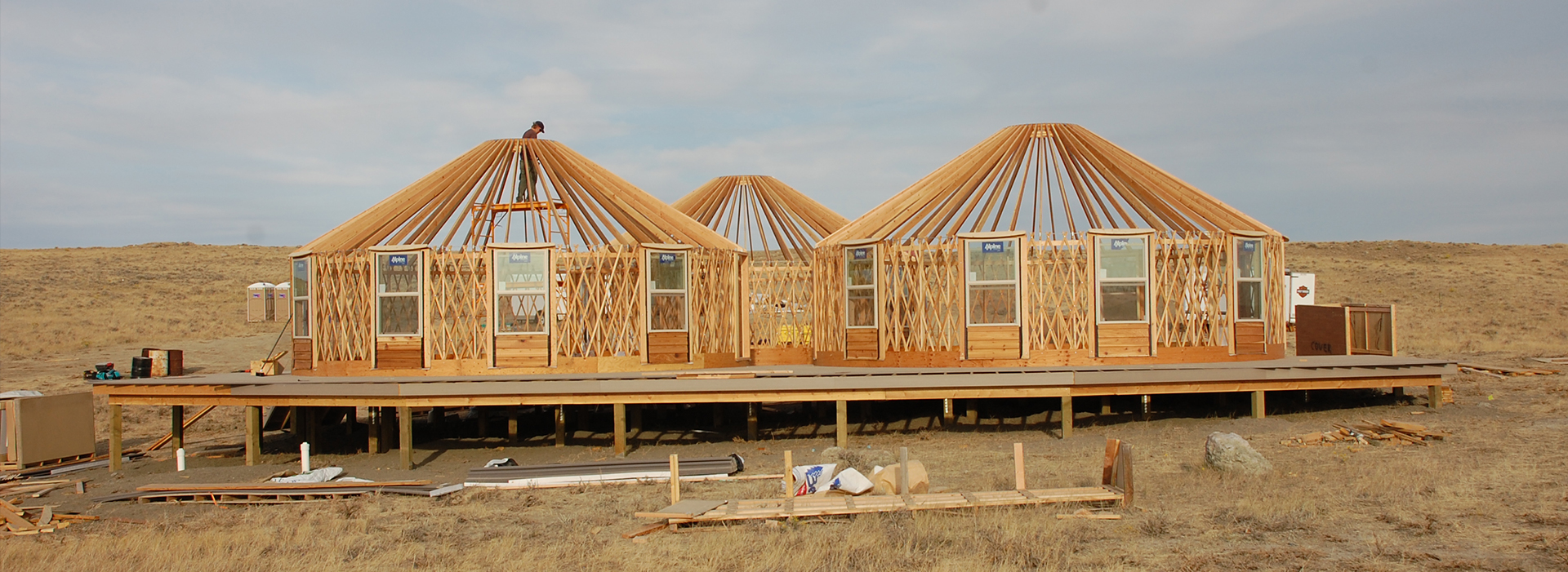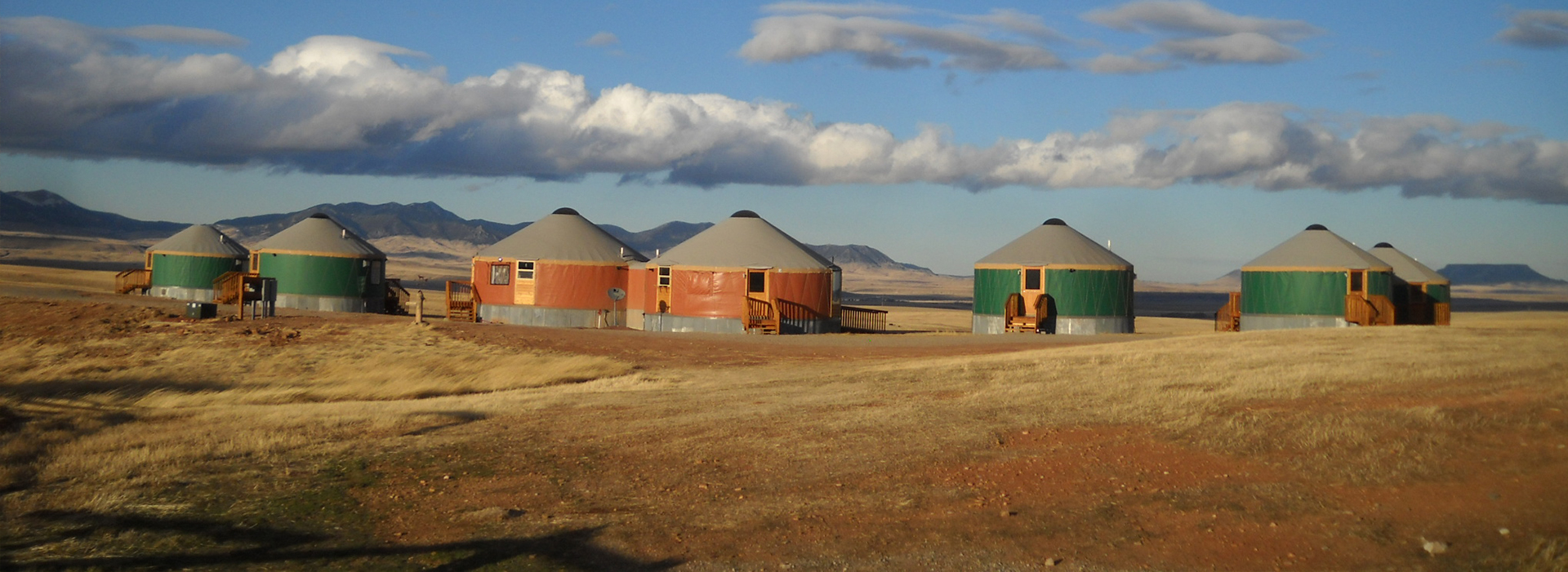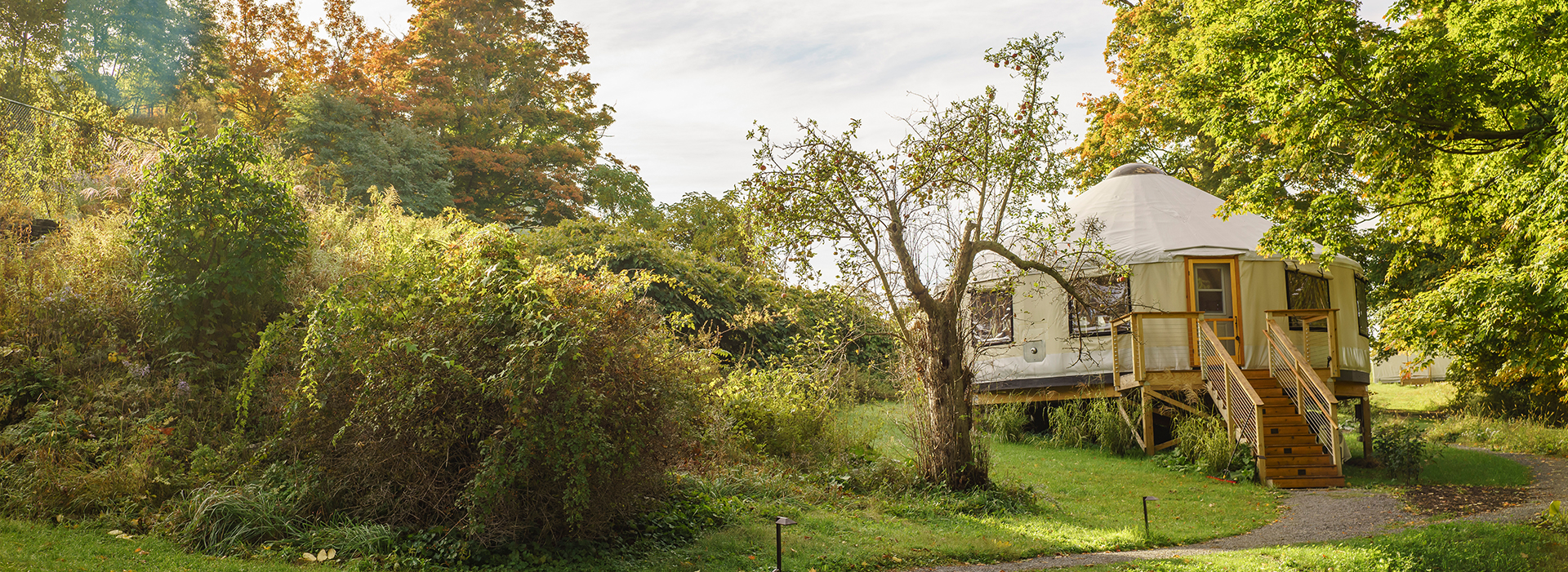Planning on the proper piece of property for a yurt is similar to buying land for other types of structures, but there are some special things to watch out for. Here are the steps we recommend you consider.
1. Research Your Area
This First step in planning your dream yurt is very important. I have outlined a lot of information for you, but this subject is in no way exhausted. While we get questions about these details on a regular basis, it is the customer’s responsibility to research your own site. Below you will find a list of the most common regulations will likely impact your project. You may also view our yurt site selection guide.
CCR’s, HOA’S, Easements, etc:
CCR’s are usually attached to the deed of the land and are hard to change. Covenants, Conditions, and Restrictions control if you can subdivide, where you must give access to neighbors, and in some cases the types of structures or buildings you are allowed to build. Home Owners Associations may have imposed additional restrictions. (on height, type of structures allowed, even if you can have chickens or a garden!) Easements are public/neighborhood access right of ways. It is important to secure legal easements on the property because handshake deals may not hold up in court, and would certainly not transfer with the sale of your land.
Here is a link for more info about restrictions: Understanding CCR’s and other restrictions
County Building Requirements:
As much as possible, make friends with your county building inspector. The building department may be contacted through the County Planning Department, or in rural areas the Fire Dept., and inspections agency may all be in the same Department. You also may need to check with your local Health Department regarding septic or sewer issues. Many counties require a perc. test for septic systems.
For instance, some rural counties have NO building codes. Some counties in CO have been requiring metal roofs due to recent fire risks. Regardless of the building codes required, we ALWAYS strive to build to withstand snow and wind loads for your area. It is usually reassuring for the county to know that your yurt can be Engineered to withstand wind and snow loads. So far, we have not met a site that could not be designed for, and we have build some heavy-duty yurts in some intense snow country, and had our yurts in hurricane areas! The details of what your yurts project will be required to have in terms of snow and wind kit, additional cables and blocking will be determined by your site. Stamped plans can be provided for a separate fee. (in most cases) Shelter Designs works closely with a local engineering firm that is licensed in all 50 states.
If you just need general information, you can say you are looking at buying land and building in the area and need to know the information outlined below. If you are ready to take the plunge, you can describe your project and get a feel for whether the county will work with you. One of the determining factors for the regulations will be the yurt’s intended use.
In general, office and yoga studio spaces along with occasional or temporary use yurts will result in fewer requirements than full-time residences.
If your yurt will be used for residential purposes, it will also have to meet local regulations for residences (heat source, size and type of openings, egress windows in sleeping areas, etc.). If you are using the yurt for commercial purposes, you may have to meet an additional set of commercial regulations.
Important Questions to Ask Your County Departments:
- What building requirements are they using?
- More specifically does your building need to be engineered?
- Are there any other special requirements?
Are they using the 2009, 2012, or 2015 ICC (International Code Council) codes, or are they still using the UBC (Uniform Building Code)? The two ICC rule books are: the residential IRC (International Residential Code) and the commercial IBC (International Building Code). The IBC is more comprehensive than the IRC and supersedes the IRC in the case of conflict. The building department will base their recommendations/requirements on these codes.
The typical engineering requirements encompass ground snow load, seismic rating, and wind speed. Your building inspector may be willing to work with you to make your yurt dreams happen. The discretion of the code official is written into the code. What we have seen is that most building code officials want to know: is it safe, and efficient.
As a membrane structure, yurts are usually classified in the “alternative structures” category, which has a unique set of code regulations. View our blog regarding relevant building and energy codes.You may also find this International Energy Code useful along with the 2015 IBC requirements.
*** Be aware that engineered plans cost additional time and money and there are usually time delays and permit fees from the county.
2. Will your foundation have additional requirements?
Again, this varies widely. We have seen customers be required to pour concrete slabs at great expense, be directed to pour a footer and tubes, or be allowed to use pier blocks. The intended use will impact this aspect as well. Commercial uses that expect large numbers (yoga studios, seminar space, etc.) may be required to build extra strong foundations to support the additional weight of crowds.
3. What are your Counties’ Energy Code requirements?
By far and away this is the requirement that causes the most consternation. There are a few factors at play here. Some counties will use this requirement to limit or exclude alternative structures such as Tiny homes, trailers, and yurts. The main criteria called out for in most Building Codes is R-Value.
In a nutshell: If your building department requires Energy Code compliance (usually high R values in roof and walls) you have 2 choices:
- Pay for a Energy code compliance report from a firm, which demonstrates that with our SIPS floor system, thermal pane windows and Arctic Insulation there are typically enough trade-offs to pass
- Establish that this structure qualifies for an exemption as lined out in the IBC (see link above)
View yurt energy compliance reports to get more information on how to get an Energy Compliance report. In short: Yurts are not insulated like traditional structures, have good U-values, and can pass energy compliance report with trade-off measurements.
****Be aware that an Energy Compliance Report will cost additional time and money!
4. What are the fire-rating requirements (for the insulation and outer fabric)?
All of our fabric come with flame ratings that pass normal building codes. We can provide this information to you if needed.
To summarize Step #1, Once you know what to expect from the county, know what your land limitations are, and feel comfortable with those, proceed to purchase land, leasing, or skip to Step#3 if you already own land!
If you want to find yurts for sale from Shelter Designs or start building your dream yurt and know the yurt cost right away, you’re in the right spot! Learn more today.




